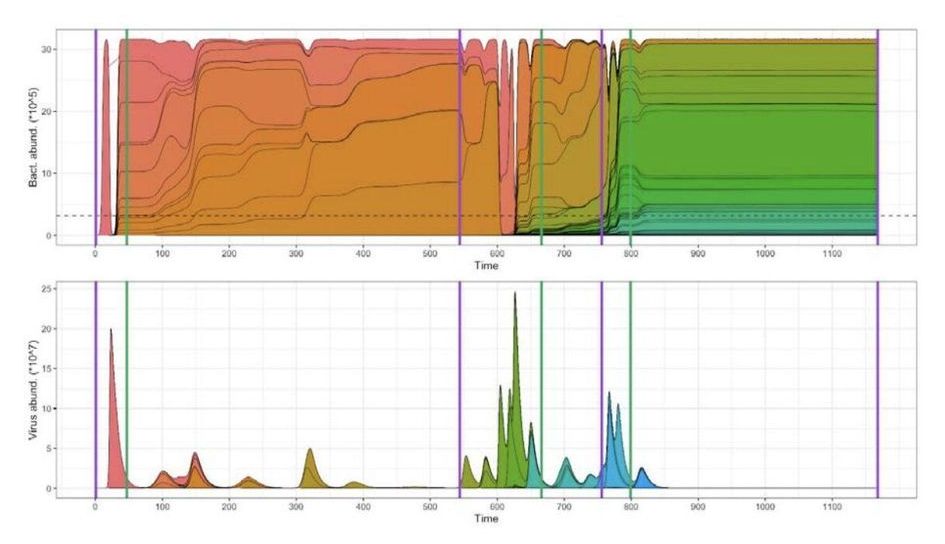SpaceX CEO Elon Musk wants to build a city on Mars, but there’s one crucial test that will determine whether his plan is a success.
Get the latest international news and world events from around the world.

Breathtaking Hubble Image Captures a Star That’s Still Being Born
Zooming in on a small corner of cloud 7,500 light-years away, the Hubble Space Telescope has caught a fascinating stage in the development of baby stars.
It’s called J025157.5+600606, and it’s just a (relatively) tiny bulge in the colossal Soul Nebula (also known as Westerhout 5) in the constellation of Cassiopeia.
But, while the section of cloud seems insignificant in the broader nebula complex to which it belongs, it’s an excellent place to learn about the birth of new stars.

CRISPR-induced immune diversification in host-virus populations
Just like humans, microbes have equipped themselves with tools to recognize and defend themselves against viral invaders. In a continual evolutionary battle between virus and host, CRISPR-Cas act as a major driving force of strain diversity in host-virus systems.
A new study led by Professor of Life Sciences Shai Pilosof (Ben-Gurion University of the Negev, Beer-Sheva, Israel), Professor of Microbiology Rachel Whitaker (University of Illinois Urbana-Champaign), and Professor of Ecology and Evolution Mercedes Pascual (University of Chicago) highlights the role of diversified immunity in mediating host-pathogen interactions and its eco-evolutionary dynamics. The study also included Professor of Bioengineering and Bliss Faculty Scholar Sergei Maslov (University of Illinois Urbana-Champaign), Sergio A. Alcal´a-Corona (University of Chicago), and Ph.D. graduate students Ted Kim and Tong Wang (University of Illinois Urbana-Champaign).
Their findings were reported in the journal Nature Ecology & Evolution.

Crews Change Command on Tuesday; Leak Temporarily Sealed
The sun’s first rays burst over the Earth’s horizon during an orbital sunrise as the International Space Station orbited above the Indian Ocean southwest of Australia.
Two veteran International Space Station residents will have a Change of Command ceremony on Tuesday before the Expedition 63 crew returns to Earth the following day. Meanwhile, the Russian portion of the crew has temporarily sealed a leak on the orbiting lab.
Commander Chris Cassidy of NASA will hand over control of the space station to cosmonaut Sergey Ryzhikov on Tuesday. The duo will be joined by the rest of their crewmates for the traditional event live on NASA TV starting at 4:15 p.m. EDT.
Cassidy will spend one more night in space with Flight Engineers Anatoly Ivanishin and Ivan Vagner before departing the station on Wednesday inside the Soyuz MS-16 crew ship. They will undock from the Poisk module at 7:32 p.m., re-enter the Earth’s atmosphere just over three hours later and parachute to a landing in Kazakhstan at 10:55 p.m. (Oct. 22, 7:55 a.m. Baikonur time). All the activities will be broadcast live on NASA TV.

Facebook unveils machine learning translator for 100 languages
Facebook on Monday unveiled software based on machine learning which the company said was the first to be able to translate from any of 100 languages without relying on English.
The open-source artificial intelligence software was created to help the massive social network deliver content better in 160 languages to its more than two billion users around the world.
“This milestone is a culmination of years of Facebook AI’s foundational work in machine translation,” research assistant Angela Fan said in a blog post.



A trillion turns of light nets terahertz polarized bytes
U.S. and Italian engineers have demonstrated the first nanophotonic platform capable of manipulating polarized light 1 trillion times per second.
“Polarized light can be used to encode bits of information, and we’ve shown it’s possible to modulate such light at terahertz frequencies,” said Rice University’s Alessandro Alabastri, co-corresponding author of a study published this week in Nature Photonics.
“This could potentially be used in wireless communications,” said Alabastri, an assistant professor of electrical and computer engineering in Rice’s Brown School of Engineering. “The higher the operating frequency of a signal, the faster it can transmit data. One terahertz equals 1,000 gigahertz, which is about 25 times higher than the operating frequencies of commercially available optical polarization switches.”

